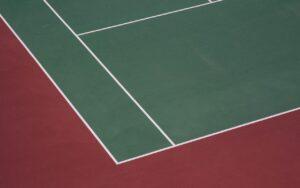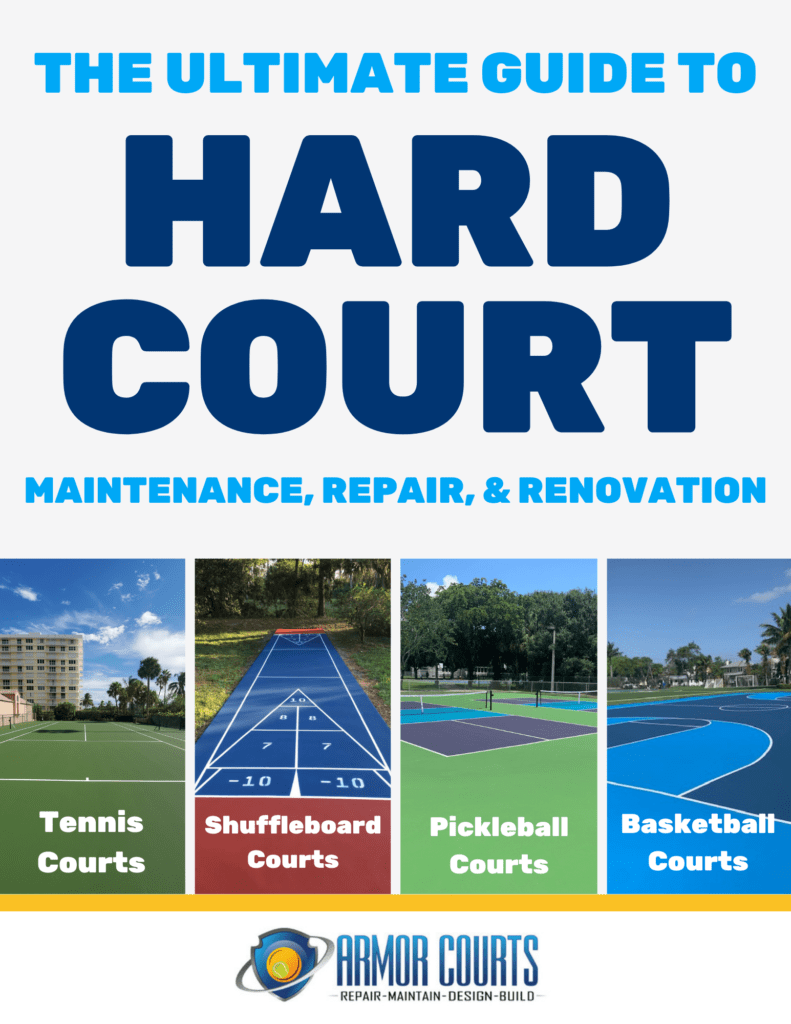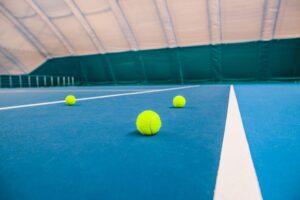

Armor Courts
Tennis Court Resurfacing | Sport Court Construction | Court Contractors/Builders

Maintenance 101

Court Maintenance
This probably is not the most interested reading but it’s a must if you want to keep your courts surface looking as beautiful and fresh as the first day it was installed. This section is written to cover issues that range from private courts, homeowner association courts, private clubs and to public courts. Select the information that is applicable. Each week we will add an additional section of maintenance!
SIGNAGE — POSTING RULES
Private club members typically know, or have posted on a bulletin board, policies as to when courts are open and closed, how long players have use of a court during busy times, and policies such as no black soled shoes permitted, no food or drink, no bicycles or skateboards, etc. — but homeowner association and public courts also need to have this information posted to eliminate problems before they start.
Getting foreign materials into the court surface can be a problem because the court surface is porous and “breathes” to allow moisture vapors in and out. This porosity also means that stains can enter the surfacing and leave permanent marks. Not allowing food and beverages onto the court is a good start.
This should be followed by allowing only white rubber soled tennis shoes, no bicycles or skateboards or other wheeled toys, black marks left behind cannot be removed.
WASHING
The single most important protection that can be used to extend and prolong the life of a tennis court surface is regular washing. Grit and dust in the air settles on a court. Twisting and running shoes which act like sandpaper, grind down the surface and wear it away. Club courts need to be washed once a week and the same is true for public courts which receive frequent usage. The unfortunate fact of life is that most public courts never get washed. Homeowner association and private courts, again subject to usage, need to be washed every few weeks to once a month. High pressure washing isn’t needed and simply wears away the surface.
THE RIGHT CLEANING ACCESSORIES
Routinely, we see courts damaged by the use of inappropriate means for cleaning or getting rid of puddles. Brooms do not belong on a court and should only be used as a last resort for leaves and branches, when a blower is not available. Hard rubber squeegees that are pressed against the surface to remove puddles are harsh on the surface and will eventually cause rubber skid marks to appear on the surface. The right way to remove water from a puddle is with either a blower or with a sponge roller that both
absorbs and pushes the moisture out of the puddle.
There are a couple of Greater Bay Area clubs which bought an item of equipment that “seemed like a good idea at the time”. This was a wheeled, court cleaner that flushed down water, applied a light scrubbing action and then vacuumed up the water. This wheeled unit fit through a 4′ gate opening. Today, those clubs have permanent wheel depressions in their asphalt surfacing caused by the summertime usage of the 4,000-pound piece of equipment, mounted on one-inch wide wheels.
Properly maintaining a court is hand labor and doesn’t lend itself to automation. The complete washing of a court and sponging of any small residual puddles can be done in less than a half hour. This process is also aided by having multiple hose bibs with ready access to each of the courts. Quick-disconnect couplers work well as they tend to eliminate unauthorized use.
Contact Armor Courts today to get started on renovating or constructing the court of your dreams today!
Maintenance
Company
Get in Touch
© 2021 Armor Courts, Inc. All rights reserved.


